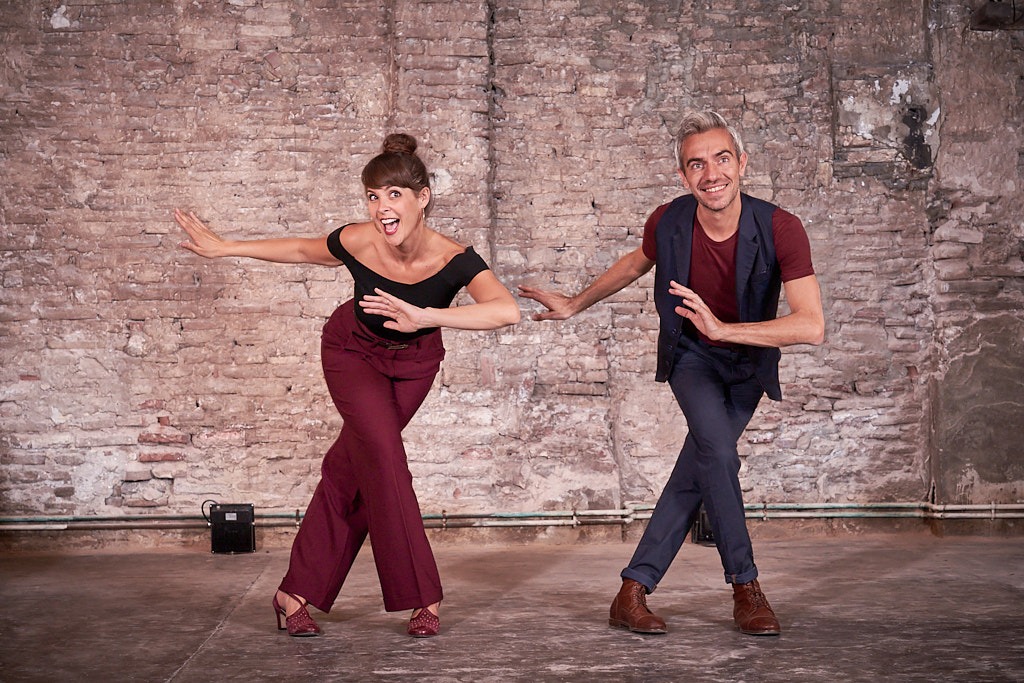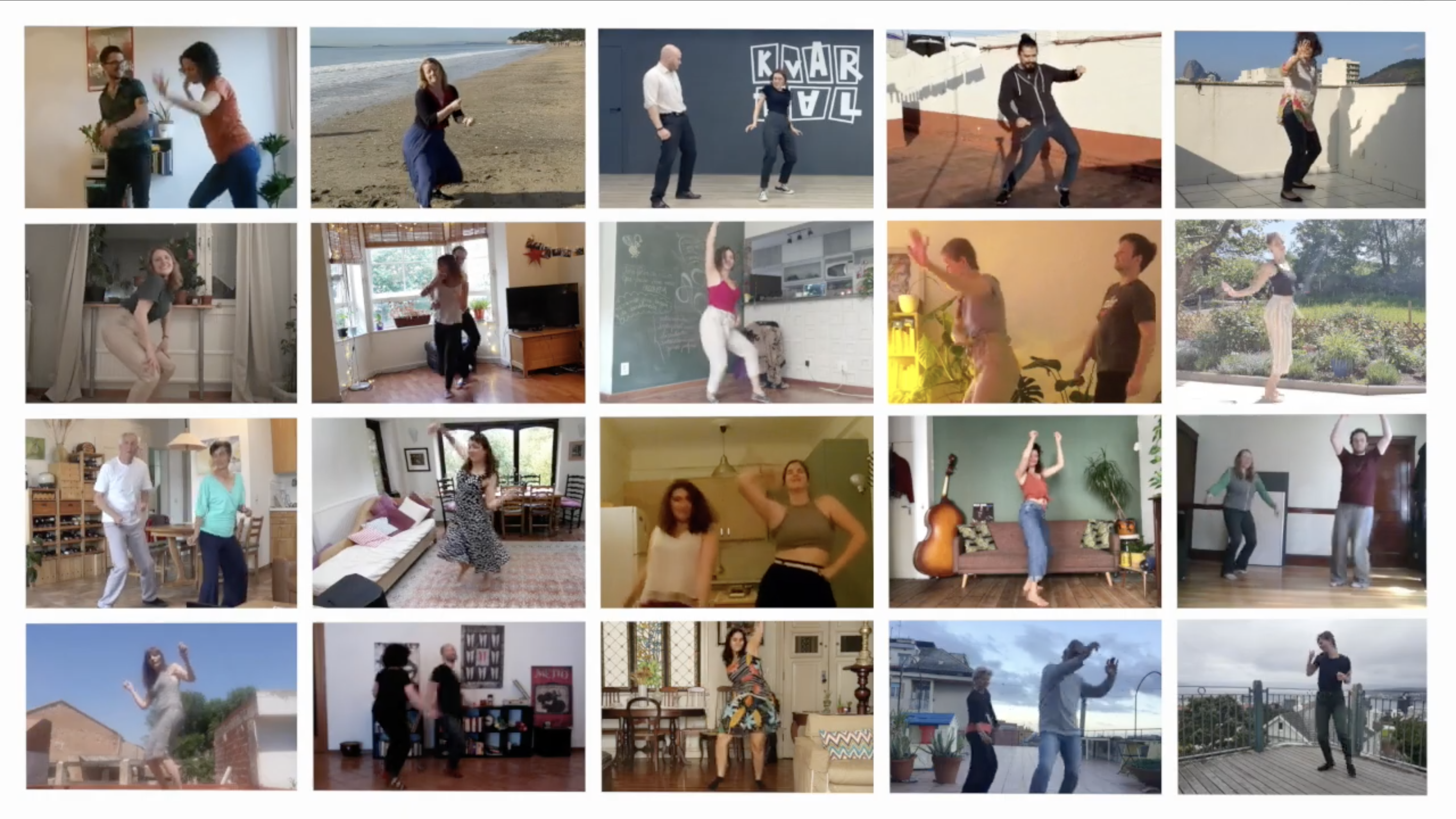In The Blues Room, we believe in supporting every dancer’s journey, whether you enjoy performing, get a kick from competing, or simply love to social dance and want to deepen your connection to dance. Learning choreography is a powerful tool for every dancer, regardless of your goal, as it enhances both the physical and cognitive aspects of dancing. In our ‘Choreographies’ section, you’ll discover fun solo routines designed to develop skills that are useful far beyond the performance realm.
Here’s why learning choreography can be transformative for every dancer:
1. Building Physical Coordination and Strength
Learning choreography requires more than just following steps. It strengthens muscle memory and improves coordination as you practice new movements in sequence. This kind of structured repetition develops control, body awareness, and agility, essential for all kinds of dance. You might find that your balance improves, your reaction time sharpens, and your sense of timing and rhythm deepens.
2. Enhancing Musicality and Rhythm
When you dance a choreography you align movement with rhythm, melody, and dynamics of the music. As you listen to and dance to the same song again and again you will start to analyse it in more detail. Notice how the movement fits to the timing, phrasing and overall structure of the song, notice what instruments you’re dancing to at any given moment. Notice what details and accents the choreographer has picked up on and highlighted through movement. You may find that as you listen to the some multiple times you pick up on nuances and details in the music that you missed on first hearing.
And of course, this attention to timing and musicality isn’t only useful for dancing a routine – it translates into more rhythmic, musical dancing when you are improvising in a social dance context too.
3. Boosting Cognitive Flexibility
One of the hidden strengths of learning choreography lies in its cognitive benefits. Memorising a sequence of steps and transitions involves concentration, memory, and problem-solving skills, which improve cognitive flexibility. When working on choreography, we practice recalling specific movements in sequence, training the brain to think more dynamically and adapt to new information quickly—skills that are useful in any dance setting (and beyond).
Research indicates that “learning and recalling sequences of movements fosters the development of neural pathways that support improved memory, attention, and multitasking” (Christensen & Chang, p. 113). As a result, dancers who practice choreography regularly become more adept at organising information and handling complex instructions in both dance and daily life.
4. Unlocking Artistic Expression
Choreography is not only about physicality; it’s also a creative journey. When you learn a choreography you are invited to explore different movement qualities, try out new styles, and connect to someone else’s interpretation of the music.
Studies on dance and mental well-being show that dance, as a form of artistic expression, “enhances our sense of identity and emotional resilience” (Christensen & Chang, p. 102). Dancers who learn choreography gain the ability to tell a story through their movements, developing confidence and self-expression that spill over into other areas of life.
5. Building a Sense of Community
This is probably my favourite reason for learning a choreography!
One special element of the choreographies taught in The Blues Room is that they are primarily line dances, designed to be enjoyed together with others at social dances rather than ‘performed’ on stage. There’s something deeply unifying about moving in sync with others to the same rhythm and beat. This synchronisation creates a sense of togetherness, bridging gaps between individuals and reinforcing community bonds.
In Dancing is the Best Medicine, Christensen and Chang discuss the unique impact of dancing in groups, noting, “When people move in sync, they experience a stronger sense of social connection and mutual trust” (Christensen & Chang, p. 145). This feeling isn’t just imagined; it’s grounded in science. Studies have shown that moving in sync with others releases endorphins, promoting feelings of happiness and belonging.
Through these choreographed line dances, we can feel a sense of unity, knowing that we’re not only connecting with those around us but also with a greater dance tradition. Learning these routines creates a shared experience, providing us with a network of individuals from across the globe who all celebrate the same art form.
For me, this feeling of unity and community through dancing “together” has never felt stronger then when we choreographed ‘We Just Want to Dance’ during the Covid 19 pandemic. At a time when we were all locked in our homes and desperate for human interaction, learning a dance routine and performing it ‘together’ (via Zoom) was immensely powerful. Many people messaged us after the experience to say that the dance routine had given them hope, and that they didn’t feel alone anymore. The below video, showing 210 people dancing the routine from their homes in 38 different countries still makes me smile and gives me goose bumps every time I watch it!
6. Preparing for Improvisation and Social Dance
Surprisingly, learning choreography can be one of the best ways to become a more confident improviser. By studying and practicing different movement patterns, you can develop a personal movement vocabulary, which you can later draw upon when dancing socially or improvising. The process of learning a choreographed routine builds confidence in executing moves with precision. Eventually, once the movements sequences are embodied, you will be able to draw on them and improvise with sections of the sequence in an intuitive and spontaneous way, giving precision and quality to your improvisations.
Christensen and Chang emphasize the value of practiced movement, noting, “A dancer’s ability to improvise successfully is rooted in a foundation of practiced choreography and disciplined movement” (p. 155). This foundation makes improvisation feel less daunting and more enjoyable.
Learning choreography offers you so much, regardless of your goals. In the ‘Choreographies’ section of The Blues Room, you’ll find a variety of solo routines to try. These choreographies are designed to enhance your skill set, help you grow as a dancer and provide you with fun routines that can be danced in sync together during parties. What better way to experience the spirit of community than through a group dance?!




